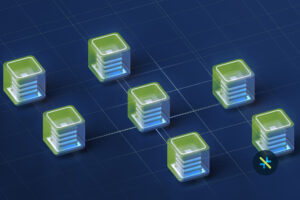Hadoop, the open-source Apache platform for big data applications, was once the go-to solution for organizations looking to store and process large volumes of data. Hadoop not only replaced traditional data warehousing solutions and empowered companies to leverage big data in multiple ways but also paved the way for more sophistication in big data analytics, becoming a significant milestone in the big data space.
While Hadoop undoubtedly opened doors to new opportunities with its flexibility to be deployed both on-premises and in the cloud, managing the rising complexities in the Hadoop architecture has become a real challenge. These complications juxtaposed with the simplicity of contemporary cloud-based data solutions are prompting companies to rethink their data strategies and contemplate the modernization of their data infrastructure.
The need for a modernized cloud architecture that can seamlessly support AI and advanced analytics has emerged as a primary catalyst for organizations to increasingly explore migrating away from Hadoop.
Why CIOs, CDOs and data teams of organizations are considering migrating from Hadoop to a more modernized data architecture? A few reasons:
- Most organizations today are dealing with terabytes and petabytes of data. Hadoop wasn’t built to handle the kind of workloads that companies experience today.
- This phenomenal data growth needs advanced analytics to harness its full potential and Hadoop struggles to support such advanced data analytics and AI/ML. It can be a challenge to enable governed self-service analytics.
- Building AI models, whether for real-time or batch ingestion, necessitates the integration of multiple components.
- Hadoop is a resource and maintenance-intensive platform requiring 24×7 management and operation support by a highly skilled workforce.
- The complexities of the Hadoop architecture fail to allow data teams to free themselves from managing the infrastructure and focus on building new use cases.
- The financial implications of running and scaling Hadoop and costly license renewals push companies to make the shift to the more cost-effective cloud alternative.

Pitfalls to be Mindful of When Migrating Off from Hadoop
When organizations consider migrating off Hadoop to modern cloud data solutions such as Databricks, Snowflake, or Azure Synapse Analytics, they prepare themselves to experience immense business agility, reduce overall operational expenses, and drive advanced analytics on their big data. However, it becomes important to understand here that this holds true only when every step in the Hadoop migration journey is conceived consciously and cautiously.
Recent market trends have highlighted common gaps in organizations’ data migration processes when transferring tens of thousands of datasets from Hadoop to another solution, leading to challenges. These common pitfalls include:
- Lack of proper planning and assessment of the existing Hadoop ecosystem and data leads to unexpected challenges.
- Misjudging data-related complexities such as nested structures or unstructured data leads to data transfer issues and data integrity concerns.
- Inadequate testing of the new architecture leads to performance issues and loss of data processing capabilities.
- A dearth of the right talent to execute the migration and support impacts continuous performance.
- Unrealistic migration timelines and rushed processes that result in lapses.
- Budget overruns due to inaccurate cost estimation of storage, processing, and data egress charges.
Hadoop Migration Best Practices
By being aware of the Hadoop migration pitfalls and taking the right steps to mitigate them, you can ensure a smoother transition to a new data architecture. Here are the 3 key steps to leverage the full potential of a modernized cloud data and AI architecture:
Step 1: A Thorough Evaluation of the ‘Why’
The Hadoop migration journey must begin with finding answers to some critical questions that become the roadmap as the company progresses toward a successful migration. A vital question to ask is why the migration off Hadoop is required. Is it because of performance bottlenecks in the existing infrastructure, growing data volumes and complex workloads, advanced data governance and compliance requirements, components of the Hadoop ecosystem reaching end-of-life (EOL), skill gaps, or any other reason? These answers then help enterprises make the right choices in the next stages of the Hadoop migration process.
Step 2: A Well-thought-out Plan that Establishes the ‘Where’ and ‘How’
The second step involves creating a comprehensive migration plan that outlines where and how the transition will occur. This involves:
- Choosing the destination platform (e.g., Snowflake, Databricks, Azure Synapse Analytics, AWS EMR, and GCP BigQuery) based on what each platform has to offer in line with the organization’s specific needs and goals.
- Evaluating the budget and cost of the migration.
- Defining the migration strategy, whether it will be a gradual transition, a lift and shift, or a hybrid approach, depending on the existing infrastructure and data requirements.
- Identifying the technical steps and processes required for data transfer, validation, and testing.
- Determining the key stakeholders and resources at every stage of the migration process.
- Processes to ensure data governance during migration to preserve data quality and compliance.
- Security measures to safeguard data during and after migration and adhere to compliance standards.
- Optimizing data storage, processing, and performance in the new environment.
Step 3: Making the Move
Once the new architecture is rigorously tested to prevent post-migration glitches and the team is equipped with the necessary skill set to manage and operate the new data solution effectively, the third step begins – the actual execution of the Hadoop migration plan. During this phase, employee resistance may arise, which can be addressed through change management practices and training the workforce to facilitate adaptation to new tools and processes.
The migration to the new environment must be approached strategically, moving the various use cases followed by the code. Once everything has been meticulously replicated in the new environment and runs smoothly, the existing Hadoop environment can be eventually decommissioned. Implementing robust monitoring tools to continuously track the performance of the new architecture is vital, along with a comprehensive disaster recovery plan to safeguard against data loss.
Moreover, the migration process and architecture must be documented for reference, troubleshooting, and knowledge transfer in the future. Continuously assessing the performance and cost-effectiveness of the new architecture and gathering feedback is crucial for improvements.
Ready to Migrate from Hadoop to a Modern Data Architecture?
The steps and considerations that we have outlined for the migration process align with best practices for successful data migration off Hadoop. However, it’s important to note that the specifics of migration can vary based on the unique circumstances and requirements of each organization. This is where expert guidance becomes critical, enabling enterprises to make the right decisions and leverage the new data solution – whether it is Snowflake, Databricks, Azure, or any other – to its full potential.
KANINI’s strategic partnerships with Databricks, Snowflake, and Azure along with deep expertise in big data technologies including Hadoop and Apache Spark enable organizations to build a robust and sustainable data infrastructure that evolves over time to deliver long-term value. With the right combination of technologies, tools, and techniques, the most complex of Hadoop migrations can be done right the very first time. This translates into the organization making speedy headway into scaling analytics, cost reduction, and increased data team productivity. Speak to us to begin your transition from Hadoop to a modernized data environment on the right track.
Author

Soundar Vetrivel
Soundar is a results-driven professional with 16+ years of diverse experience in Data Analytics and Project Management. Currently spearheading data warehouse projects at KANINI, Soundar is known for his forward-thinking approach, delivering value to our clients. His expertise extends to managing enterprise architecture processes, data management programs, and creating innovative business solutions powered by advanced analytics.








